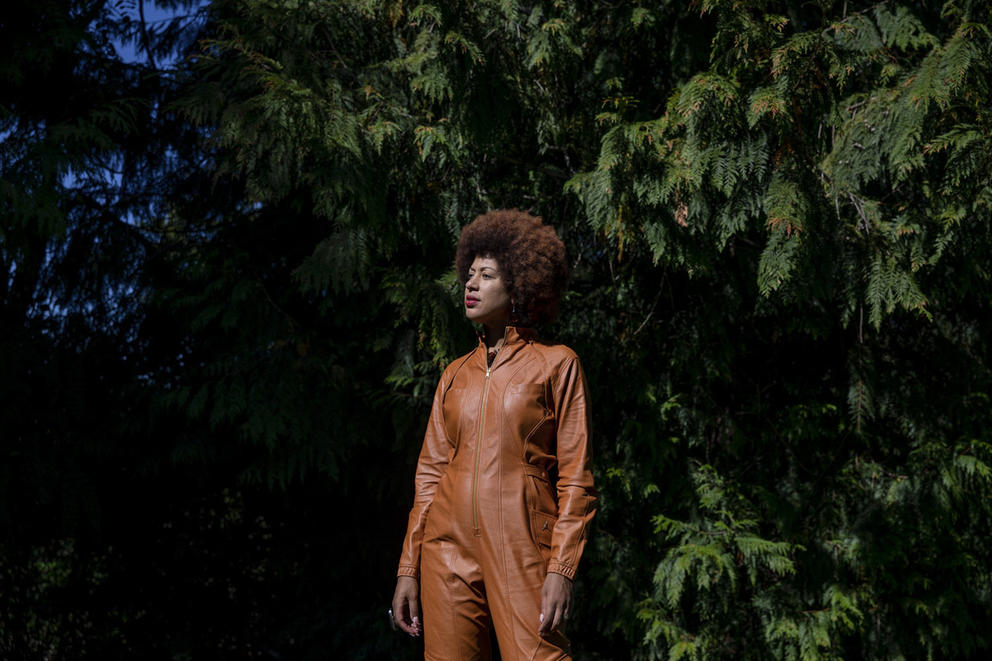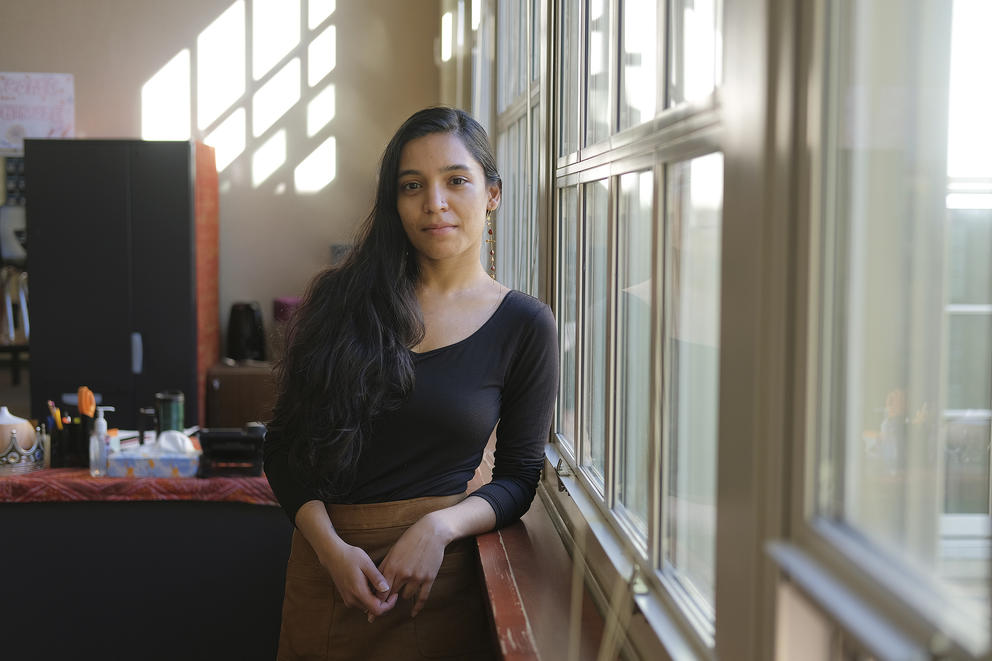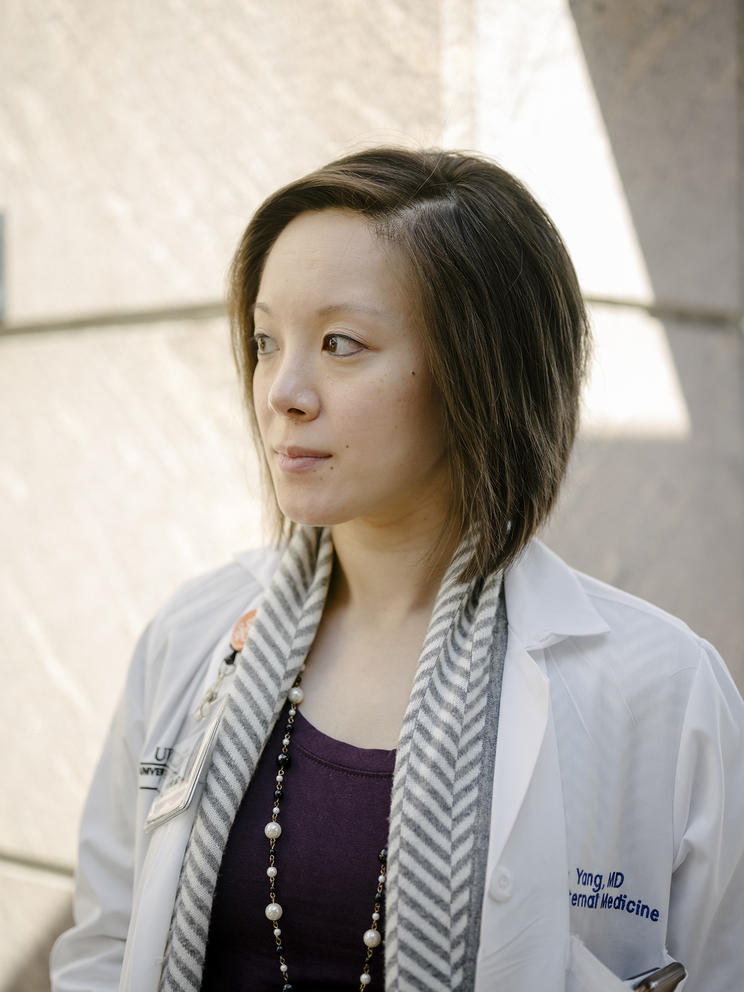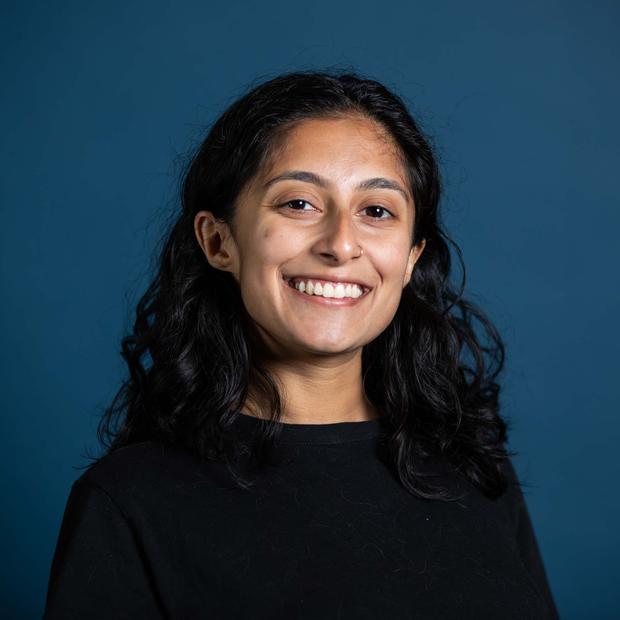To Jones, things feel different in the virtual COVID-19 world. The education and systems consultant can create the space when her work takes place on Zoom.
She is spared observations about her appearance. And, of course, no one can touch her hair, an action many Black women view as a microaggression ー defined by Merriam-Webster as an action or a comment “that subtly and often unconsciously or unintentionally expresses a prejudiced attitude toward a member of a marginalized group.”
A Gallup Panel survey in 2020 found that Black adults were more likely than Asian, Hispanic or white adults to report experiencing different types of microaggressions, like how often an individual was treated with less respect than others or received worse service in stores or restaurants. In light of “the Great Resignation” ー a phenomenon that refers to droves of Americans leaving their jobs ー the Society for Human Resource Management, or SHRM, in September reported who was more likely to say they were looking for new employment: This included younger workers, as well as Black and Hispanic people.
"This means our inclusion efforts are not as effective as we thought," said Alex Alonso, chief knowledge officer with SHRM, in an article published by the organization.
Some, like Jones, got a reprieve from microagressions during the pandemic, while others found little difference in how frequently they experienced them or felt they actually intensified.
It might be more comfortable for Jones to work from home, but she feels a duty to meet people face to face. She believes part of the reason why microaggressions exist and why people struggle to discuss topics like race, gender and sexual orientation is because these subjects are not openly discussed.
Still, the slights can be exhausting.
“You always have to kind of have a little bit of your armor on,” she said.
Impact of microaggressions
Experiencing microaggressions might be a full-time job for some.
Kathryn Young, a professor at the Metropolitan State University of Denver, has explored microaggressions in higher education based on a person’s role and identities. While her work does not specifically focus on microaggressions’ impact on one’s body and brain, Young noted other researchers have found psychological consequences related to microaggressions, including anxiety and depression.
“If you’re busy protecting yourself from psychological harm, of course, it’s going to affect your productivity and your happiness at work,” Young said.
Gallup concluded its findings by noting that violence typically ignites dialogue in the U.S., yet many Black Americans experience discrimination and mistreatment in ways that “are much subtler and are woven into the routines of their normal, daily lives.”
That’s why Ahmad Corner started 1000 Cuts, a project that invites people to share their microaggression experiences.
“In between each overt, televised act of injustice are a thousand subtle cuts of discrimination … the kind of stuff that’s so often dismissed, or rationalized as a joke or an innocent misuse of words,” a description of the campaign states. “Not violent, not overt, but in aggregate a painful reminder of your place.”
The project was born after a Minneapolis police officer killed George Floyd. Corner observed a cycle of people protesting, the conversation dying down and repeating when another traumatic event takes place.
One comment may not be entirely damaging, he said. “But African Americans, especially, carry dozens of comments with them without feeling like they are able to talk about ’em,” Corner said. “Or able to say, ‘Hey, that’s not cool.’ ”
What racial microaggressions look like
Corner’s own experience exists among the series of anecdotes documented in 1000 Cuts. In it, he described an interview he had for an internship when he was 20. A white, female interviewer told him she did not expect him “to be so articulate” — a comment Jones has also received.
This statement falls under one type of racial microaggression known as “ascription of intelligence,” according to the University of Minnesota. This theme involves assigning intelligence to someone based on the person’s race.
Another type of racial microaggression, known as “alien in own land,” occurs when someone assumes an individual was born in a different country. This happened to Yihan Yang recently when a patient asked if she knew what the word “wuss” meant.
“Oh good,” the patient said, according to a tweet Yang posted in reference to the exchange. “I wasn’t sure, you know, about your language skills.”
Yang moved to Seattle in 2020 and works at the University of Washington Medical Center, generally in person. Her work as an academic hospitalist includes taking care of patients admitted to the hospital and teaching some of the trainees in the Internal Medicine Residency Program. Until a few years ago, she didn’t consider herself particularly educated on microaggressions, which come her way from patients every now and then.
“It’s just sort of some offhand comment that I don’t think anybody means anything by,” she said, noting the comment likely would not have been made to someone who was male or white.
She has not been subject to some of the more overt types of racism faced by other Asian Americans in the field at a time when some people refer to COVID-19 as the China virus 一 “whether the health care worker’s Chinese or not.”
The frequency of microaggressions directed at Yang hasn’t fluctuated much during the pandemic.
“I think I’ve come to accept it as almost like a part of life,” she said, adding that she is more likely to respond if a medical student or resident receives a comment from a patient. “Certainly if it’s me with a patient on my own, I don’t address it as much. I just don’t try to take it personally unless it’s like, really offensive.”
Who faces microaggressions in the pandemic?
Yang falls within the groups of people identified by Diya Khanna as those dealing with microaggressions during the pandemic.
Khanna, a diversity equity and inclusion consultant, named women of color, mothers and individuals with disabilities as groups navigating slights.
Khanna has heard of a few COVID-unique microaggressions, including a lack of recognition for the work people are doing, especially as the lines between work and nonwork life have blurred and concerns rise about the resilience of those experiencing mental health challenges or feeling burnt out.
Another microaggression she mentioned involves assumptions about why someone does not have their camera on during a virtual meeting. It could simply signal that an individual does not want to give others a portal into their homes or may be wearing their hair in a way that they would only at home, Khanna said.
Some are anxious about heading back to the office for reasons other than their fear of contracting COVID-19.
“They may have to go back into these face-to-face interactions where they feel unsafe, where they can’t navigate their emotions,” she said. “There’s no place to hide those emotions.”
Conversely for Shraddha Shirude, a high school math teacher in Seattle, the veil on emotions is part of the reason remote work falls short for her.
In her eyes, the virtual world fails to fully convey the hurt one might experience at the hands of colleagues. She considers the ability to hold side conversations (if, for example, a co-worker makes an unsavory remark) diminished in remote meetings if only one person can speak at a time.
“I think it made it actually more difficult for learning about humanity because we were not interacting with each other in more than just professional ways,” she said.
Online interactions have exacerbated one particular microaggression from Shirude’s perspective. She described a scenario in which someone speaks up on an issue that directly impacts them and does not receive support publicly, but hears positive feedback in private from colleagues unaffected by that issue.
This highlights to Shirude the unwillingness of people to go outside their comfort zone. These incidents happen both virtually and in person, but she felt they had increased online because it’s easier to message someone than to find them in the hallway.
“You know what would have been helpful?” she said. “If you had also said something.”





